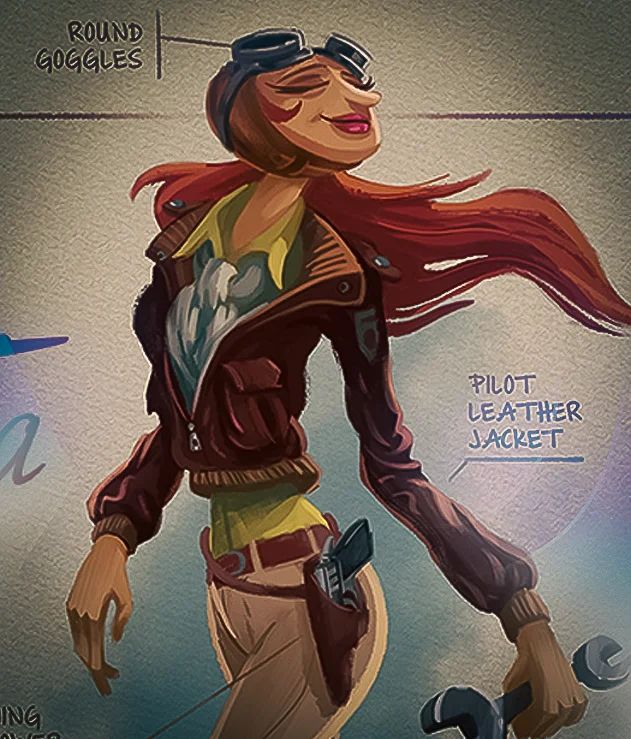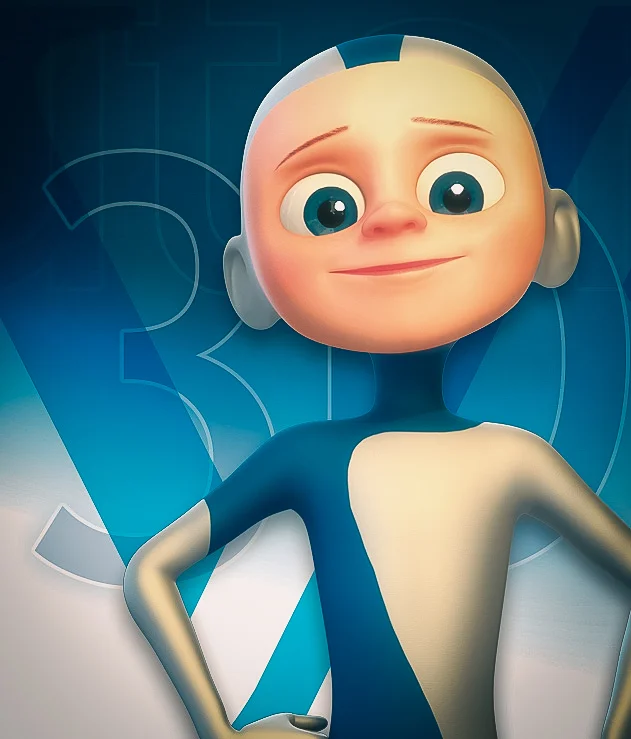 Image: Alina Kolyuka (Motion Array)
Image: Alina Kolyuka (Motion Array)
Author: VANAS Team
How EA Became the Champion of Soccer Video Games
VANAS Online Animation School offers Animation, Visual Effects, and Video Game programs. To launch your career, visit https://www.vanas.ca.
Table of Contents
- The Early Days of Soccer Video Games
- The Birth of EA Sports and FIFA Soccer
- The Evolution of FIFA
- The Power of Licensing
- Innovation in Gameplay and Technology
- Competitors vs. FIFA: Why EA Dominated
- The Future of Soccer Video Games
The Early Days of Soccer Video Games
Picture a time when soccer video games looked like tiny squares running around on a green screen. In the early 1980s, that was the reality. Games like "International Soccer" on the Commodore 64 were simple and clunky, but they paved the way for something bigger. The idea of controlling your favorite team in a virtual match was exciting, even if the players looked more like moving blobs than actual athletes.
But then came Electronic Arts. At the time, EA was just another gaming company trying to make a name for itself. No one knew they were about to change the world of soccer video games forever.
The Birth of EA Sports and FIFA Soccer
In 1993, EA Sports released "FIFA International Soccer." It was a game-changer. Unlike other soccer games, FIFA had fluid animations, realistic ball physics, and an official license from FIFA, the organization that governs world soccer. For the first time, players could control real national teams, and that alone made it stand out from the competition.
This was also the beginning of EA’s famous slogan: "If it's in the game, it's in the game." The goal was clear—make the most realistic soccer game ever.
The Evolution of FIFA: From Pixels to Photorealism
Year after year, FIFA kept getting better. The graphics improved, the gameplay became smoother, and new features were added to keep things fresh. By the early 2000s, FIFA had introduced full leagues, commentary, and career mode, allowing players to manage teams as well as play.
Then came FIFA 08, which introduced "Be a Pro" mode, letting players control just one footballer instead of an entire team. This feature made the game feel even more personal. You weren’t just playing a match—you were living a soccer career.
By the 2010s, FIFA games looked nearly identical to real-life matches. With ultra-realistic animations, authentic stadiums, and lifelike player models, it was like watching a live soccer game—except you were in control.
VANAS Online Animation School offers Animation, Visual Effects, and Video Game programs. To launch your career, visit https://www.vanas.ca.
The Power of Licensing: How EA Won Over FIFA and Clubs
One of EA’s smartest moves was securing exclusive rights to FIFA’s name and licenses. This meant that FIFA games could feature real teams, leagues, and players. Other soccer games struggled to compete because they had to use generic team names and unlicensed players.
Imagine playing a soccer game where instead of "Manchester United," you had "Red Team." Or instead of Lionel Messi, you had "Leonel Mesi." Not as exciting, right?
By keeping official licenses locked down, EA made sure FIFA was the only game where fans could play with their favorite teams and players. This alone kept millions of gamers coming back year after year.
Innovation in Gameplay and Technology
FIFA wasn't just about fancy graphics and real players. EA constantly pushed the boundaries of gameplay. Here are some of the biggest innovations:
- Frostbite Engine: FIFA switched to the Frostbite engine in 2016, which made everything from player movement to stadium lighting look ultra-realistic.
- Ultimate Team Mode: Introduced in FIFA 09, this mode lets players build their dream team using real players from different leagues. It quickly became one of FIFA’s most popular and profitable features.
- The Journey: A story mode introduced in FIFA 17, where players controlled Alex Hunter, a young footballer trying to make it to the top. It was like playing a sports movie.
Competitors vs. FIFA: Why EA Dominated
FIFA wasn’t the only soccer video game on the market. There was also Pro Evolution Soccer (PES), which many hardcore fans actually preferred because of its gameplay.
However, PES had a problem—it didn’t have the same level of licensing as FIFA. This meant fewer real teams, leagues, and stadiums. Over time, FIFA became the go-to game for casual and competitive players alike, while PES struggled to keep up.
By the 2020s, FIFA was the undisputed king of soccer video games. Even when PES rebranded to "eFootball," it couldn’t shake FIFA’s dominance.
The Future of Soccer Video Games
In 2023, EA shocked the gaming world by announcing that FIFA 23 would be the last game to carry the FIFA name. The partnership between EA and FIFA ended, and EA’s new soccer game was named EA Sports FC.
But will EA still dominate without the FIFA name? Most likely, yes. EA still has deals with hundreds of leagues and clubs, meaning EA Sports FC will continue to have real teams, players, and stadiums. Plus, with years of innovation and fan loyalty, EA isn’t going anywhere.
Frequently Asked Questions
Why is FIFA more popular than PES?
- FIFA had exclusive licensing deals with real leagues, teams, and players, while PES had to use generic names. This made FIFA the preferred choice for many players.
When did FIFA introduce Ultimate Team mode?
- Ultimate Team mode was introduced in FIFA 09 and quickly became one of the most popular features in the game.
What happened to the FIFA video game series?
- EA ended its partnership with FIFA in 2023 and rebranded the game as EA Sports FC, but it still features real teams and players.
What is the most successful FIFA game?
- FIFA 18 and FIFA 19 are among the best-selling FIFA games, each selling over 20 million copies.
Will EA Sports FC be as good as FIFA?
- Most likely, since EA still has most of the licenses and all the technology behind FIFA.
The Legacy of EA’s Soccer Games
From pixelated players in the 90s to photorealistic footballers today, EA has shaped the way we experience soccer in video games. With groundbreaking gameplay, official licenses, and constant innovation, they have truly earned their crown as the king of soccer video games.
And just like the gaming industry, animation plays a huge role in making these games immersive. If you’re interested in creating the next big video game, VANAS Online Animation School offers Animation, Visual Effects, and Video Game programs. To launch your career, visit https://www.vanas.ca.







